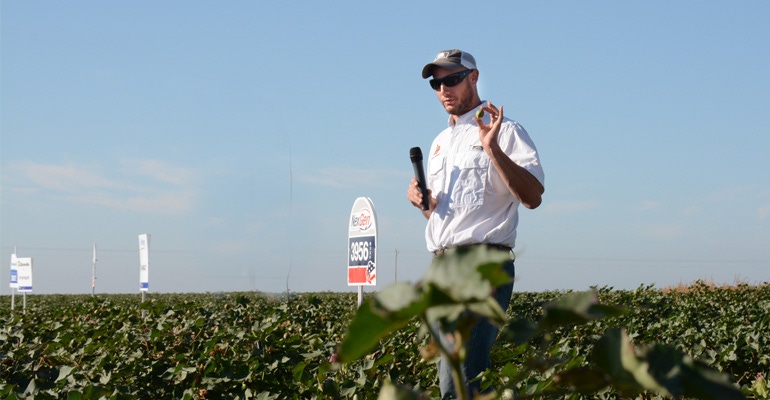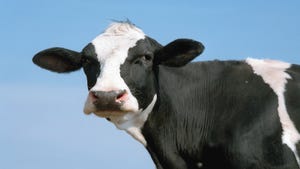
Whether a seasoned cotton producer or a rookie, this time of year it's important to remember, "cotton is a perennial," Oklahoma State University Cotton Specialist Seth Byrd says. "It's going to end its season on its own. And like other trees, it's going to lose its leaves in the fall and naturally open its bolls." So, when contemplating harvest aids, "Don't fight the plant."
Byrd recently discussed harvest aid considerations during the Cotton Tour at the virtual Milan No-Till Field Day.
"We want to nudge the cotton along and let it do some of the heavier lifting at a premature stage. Then, once it reaches a point where the chemicals and application can be effective, we jump in and help it get to the finish line faster for a timelier harvest."
Byrd breaks harvest aids into four categories:
Defoliants — herbicidal (tribufos or PPOs), tribufos typically very effective on removing mature leaves; PPOs are better for removing growth and slightly less temperature-sensitive.
Boll openers — hormonal (ethephon), commonly referred to as Prep although numerous generics and other formulations are available; defoliation activity is dependent on weather and crop condition.
Regrowth inhibitors — hormonal and herbicidal (thidiazuron+diuron), some defoliation activity.
Desiccants — herbicidal (paraquat), condition crop for stripper harvest, minimal boll opening and defoliation activity.
What mix is working?
A question producers often ask Byrd is what mix is working? Before he formulates an answer, he asks them three questions:
1. What is the crop condition? What needs to happen between now and when the stripper or picker enters the field?
"It is a field-to-field decision," Byrd says. "Planting dates change, varieties change, rainfall changes in very small areas.
"Look at one field, but don't make a blanket prescription for all of your acres."
2. What does the five- to 10-day forecast look like? What is the forecast going to allow me to do if there's rain in the forecast or cold temperatures and it's cloudy?
"A lot of times if rains or a storm is in the forecast we recommend letting the crop weather with the leaves off from a fiber quality standpoint.
"If we've got good conditions, warm sunny weather, no stress, then I'm going to try to get as much harvest aids out as I can, but also being realistic about my ability to get that crop out of the field.
"Often, we see harvest aids applied to several hundred acres and only harvest 200 or 300 before it rains. You could expose the rest of the crop to that weathering. We don't want to get ahead of our harvest capabilities."
3. What is my budget?
"Don't put a four-bale harvest aid mix into a two-bale crop. And vice versa. Don't put a two-bale harvest aid mix into a four-bale crop.
"Harvest aids are the last thing between you and finishing the season. Cotton is a very time-consuming crop to produce. There's a lot to be gained by getting the harvest aids right by making a more timely decision and by putting a little more money into a first pass rather than making two or three passes."
Late-planted cotton
In areas with late-planted cotton, the first freeze is a concern. In Oklahoma, the first freeze date is usually mid-October, which means going into the month with green, unopened bolls that either will not be harvestable or won't have high-quality lint, Byrd says.
If there's favorable weather, Byrd recommends applying defoliant and boll opener at least four days prior to a killing freeze (forecasted low of < 30 degrees ) to increase successful boll opening and leaf drop.
Carrier Volume
Besides choosing the right products, Byrd says carrier volume is key. "Don't cheat.
"Carrier volume is what drives defoliation success. For me, 10 GPA (gallons per acre) is my minimum. I don't go below that."
Next: Picture perfect cotton doesn't determine defoliation timing
To view Byrd's presentation or others, go to https://bit.ly/34m6fXI. Click on the name of the presenter or the topic to view the video.
About the Author(s)
You May Also Like






